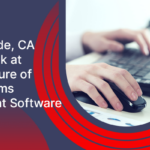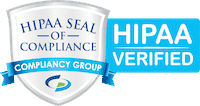Riverside, CA: A Look at the Future of Claims Management Software in 2024
July 25, 2024
In the ever-evolving landscape of healthcare, technology plays a pivotal role in driving efficiency, accuracy, and innovation. Third-party administrators (TPAs) have long been instrumental in managing healthcare claims on behalf of insurers, employers, and healthcare providers. Over the years, TPA software has evolved remarkably, transitioning from legacy systems to cutting-edge solutions powered by advanced technologies. In this blog post, we’ll trace the evolution of TPA software, exploring its journey from rudimentary platforms to sophisticated solutions that are revolutionizing claims management in healthcare.
Legacy Systems: The Early Days of TPA Software
In the early days of TPA software, legacy systems dominated the landscape. These systems were typically on-premises solutions characterized by rigid architectures, limited functionality, and cumbersome user interfaces. Built on outdated technologies, legacy TPA software struggled to keep pace with the rapidly evolving demands of the healthcare industry. Common challenges associated with legacy TPA software included:
- Lack of scalability: Legacy systems were often ill-equipped to handle large volumes of claims data, leading to performance bottlenecks and system crashes.
- Manual processes: Legacy TPA software relied heavily on manual data entry and paper-based documentation, resulting in inefficiencies and errors.
- Limited interoperability: Legacy systems were siloed and lacked interoperability with other healthcare IT systems, hindering data exchange and collaboration.
- Compliance concerns: Legacy TPA software struggled to comply with evolving regulatory requirements, posing risks to data security and privacy.
Despite these challenges, legacy TPA software served as a foundation for the digitization of claims management processes in healthcare, laying the groundwork for future innovations.
Transition to Web-Based Solutions
As the internet became more prevalent in the late 20th century, TPA software underwent a significant transformation with the advent of web-based solutions. Web-based TPA software offered several advantages over legacy systems, including:
- Accessibility: Web-based TPA software could be accessed from any internet-enabled device, enabling remote work and improving collaboration among stakeholders.
- Scalability: Web-based solutions were inherently scalable, allowing for the seamless expansion of infrastructure to accommodate growing data volumes and user demands.
- Improved user experience: Web-based interfaces were more intuitive and user-friendly compared to the clunky interfaces of legacy systems, leading to increased adoption and user satisfaction.
- Enhanced interoperability: Web-based TPA software embraced standards-based protocols and APIs, facilitating seamless integration with other healthcare IT systems such as electronic health records (EHRs) and practice management systems.
The transition to web-based TPA software marked a significant milestone in the evolution of claims management, laying the groundwork for future advancements in technology and functionality.
Rise of Cloud Computing and SaaS Solutions
In the early 21st century, cloud computing emerged as a game-changer for TPA software, offering unparalleled flexibility, scalability, and cost-effectiveness. Software-as-a-service (SaaS) models became increasingly popular, allowing TPAs to access sophisticated software solutions without the need for significant upfront investment in hardware or infrastructure. Key benefits of cloud-based TPA software include:
- Cost savings: Cloud-based TPA software eliminates the need for costly hardware purchases and maintenance, offering a more affordable alternative for TPAs of all sizes.
- Scalability: Cloud-based solutions can easily scale up or down based on user demands, ensuring optimal performance and resource utilization.
- Enhanced security: Cloud providers invest heavily in robust security measures, offering greater protection against data breaches and cyber threats compared to on-premises deployments.
- Continuous updates and improvements: SaaS models enable vendors to deliver regular updates and enhancements to TPA software, ensuring that users always have access to the latest features and capabilities.
The rise of cloud computing and SaaS solutions has democratized access to advanced TPA software, empowering TPAs to compete more effectively in the dynamic healthcare marketplace.
Integration of Advanced Technologies
In recent years, TPA software has undergone a rapid evolution driven by the integration of advanced technologies such as artificial intelligence (AI), machine learning, and predictive analytics. These technologies are revolutionizing claims management by automating routine tasks, optimizing decision-making, and uncovering valuable insights from claims data. Key applications of advanced technologies in TPA software include:
- Automated claims processing: AI-powered algorithms can analyze claims data and automatically adjudicate straightforward claims, reducing the need for manual intervention and speeding up the claims lifecycle.
- Predictive analytics: Machine learning models can identify patterns and trends in claims data, enabling TPAs to predict claim denials, detect fraudulent activities, and optimize resource allocation.
- Natural language processing (NLP): NLP algorithms can parse unstructured data from clinical notes and other sources, extracting valuable information to support claims adjudication and decision-making.
- Robotic process automation (RPA): RPA bots can automate repetitive tasks such as data entry, claim routing, and follow-up communications, freeing up human resources for more value-added activities.
By harnessing the power of advanced technologies, modern TPA software is transforming claims management into a more efficient, accurate, and data-driven process.
Future Trends and Innovations
Looking ahead, several trends are poised to shape the future of TPA software and claims management in healthcare:
- Blockchain technology: Blockchain has the potential to revolutionize claims management by providing a secure, transparent, and tamper-proof ledger for storing and sharing claims data.
- Telehealth integration: With the rise of telehealth services, TPA software may need to integrate seamlessly with telemedicine platforms to support claims processing for virtual consultations and remote patient monitoring.
- Personalized medicine: As healthcare becomes more personalized, TPA software may incorporate predictive analytics and AI to support claims management for precision medicine initiatives.
- Regulatory compliance: TPAs will need to stay abreast of evolving regulatory requirements such as the Health Insurance Portability and Accountability Act (HIPAA) and the Affordable Care Act (ACA) to ensure compliance and mitigate risks.
Conclusion
The evolution of TPA software from legacy systems to cutting-edge solutions has been driven by technological advancements, changing industry dynamics, and evolving customer demands. Today’s TPA software offers unprecedented levels of efficiency, accuracy, and innovation, empowering TPAs to streamline claims management processes, enhance patient care, and drive business success. As technology continues to evolve and healthcare undergoes further transformation, TPA software will remain at the forefront of innovation, shaping the future of claims management in healthcare.
7 Features Every Online Claim Management System Needs
June 27, 2024What to Look for in Claims Management Software?
May 8, 2024









